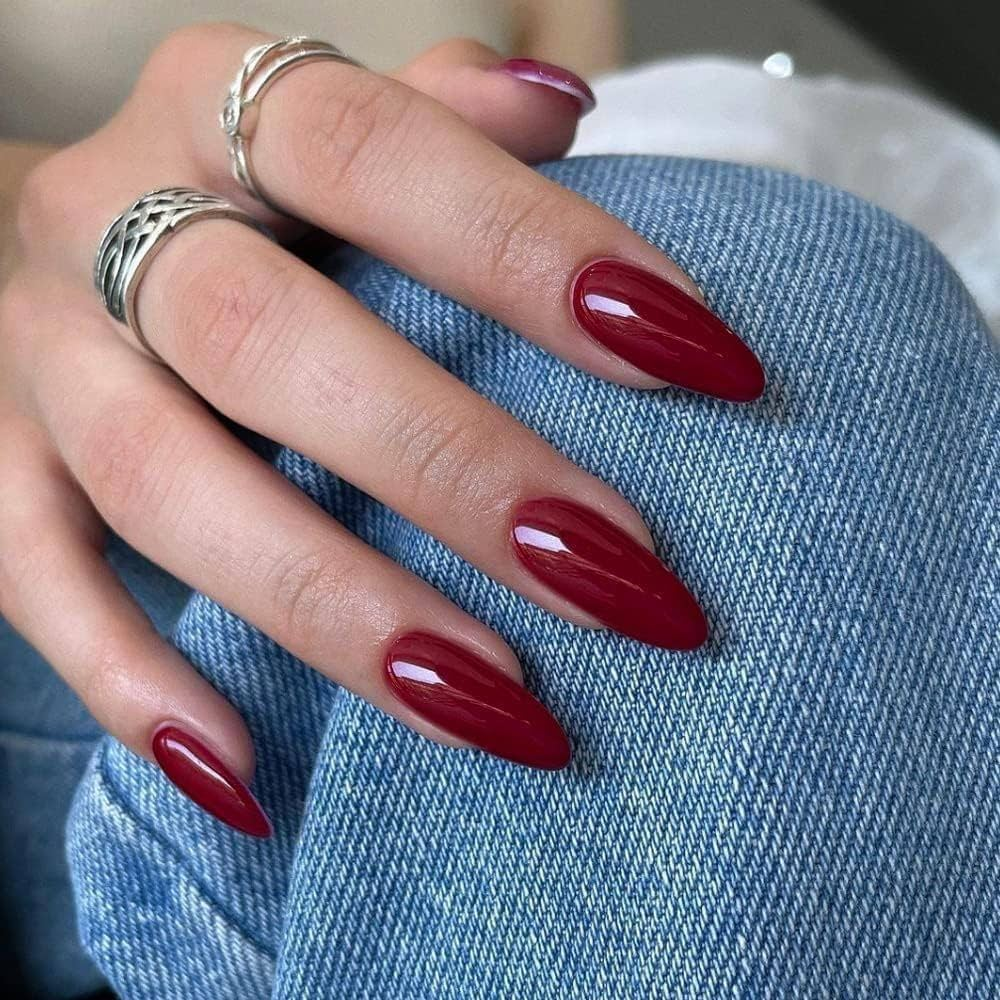
Weak nails are a prevalent issue affecting many people, with the result often generating frustration when they break, peel, or don’t grow well. Making the right nail enhancement can make all the difference in your nail’s appearance and health. Nail enhancements not only secure weak nails but provide a glossy, professional appearance as well. But making the right choice depends on knowing your nail type, your lifestyle, and your expectations. In this article, we will discuss ten important points to bear in mind when selecting the best nail enhancement for weak nails.
1. Determine Your Nail Type
The process of selecting the ideal nail enhancement begins by knowing your natural nail type. Weak nails can be brittle, peeling, thin, or soft, and each condition might call for a unique solution. For example, weak and peeling nails would be better off with protective coverings such as gel or acrylic, whereas soft nails would need strengthening treatments in addition to enhancements. Identifying your nail type prevents you from using products that might further harm your nails and allows your selected enhancement to give the adequate support and strength needed. Getting guidance from an experienced nail technician will also be able to pinpoint certain vulnerabilities in your nails.
2. Consider Nail Strengthening Treatments
Prior to choosing any type of nail enhancement, nail strengthening treatments should be taken into account. Some of these products include protein-based nail strengtheners, cuticle oils, and vitamins, which can actually improve the strength of your nails over time. These treatments are effective because they restore the natural keratin in nails, stimulate growth, and decrease brittleness. Some nail enhancements, such as hard gels or dip powders, may also contain strengthening ingredients that rebuild the nail from the inside out. Combining strengthening treatments with enhancements guarantees long-term health of the nail instead of merely temporary cosmetic enhancement.
3. Consider Various Nail Enhancement Options
Various forms of nail enhancements exist, including acrylics, gel extensions, dip powders, and silk wraps. Each choice has advantages and possible disadvantages: acrylics are strong and suitable for fixing broken nails but can be tough if taken off incorrectly; gel nails offer a natural appearance and pliability, making them a good choice for delicate nails; dip powder nails are light and long-lasting; whereas silk wraps provide gentle support without cumbersome chemicals. Assessing these choices based on durability, flexibility, and procedure process enables you to make an educated decision for brittle nails.
4. Evaluate the Effect on Natural Nails
The most important aspect of selecting a nail enhancement is considering its effect on your natural nails. Certain enhancements, especially acrylics, involve filing and buffing, further thinning nails if overdone. Gel nails and dip powders are softer but still need to be applied and removed carefully. Weaker nails are more likely to be damaged throughout the enhancing process, so selecting an approach that puts less stress on the natural nail is vital. Opt for enhancements that are “nail-friendly” or “strength-building,” and always have a professional remove and apply them.
5. Think About the Longevity of the Enhancement
Longevity is also a significant consideration in choosing the appropriate nail enhancement for brittle nails. Certain enhancements, such as acrylics, last as long as three to four weeks with proper maintenance, whereas gel nails will last two to three weeks. Dip powder nails are also very resistant to chipping and long-lasting. When working with brittle nails, select an enhancement that lasts long enough not to need to be applied frequently since repeated filing and removal damages nails further. With your lifestyle, activities, and time considerations in mind, you can choose an enhancement that is both durable and good for your nails.

6. Assess Maintenance Needs
Maintenance needs range greatly among various nail enhancements. Acrylics need fills every two or three weeks, and gel nails need a touch-up every two weeks. Dip powder nails are low maintenance and need less frequent trips to the salon. Delicate nails appreciate low-maintenance fillers since frequent filing, buffing, or chemical exposure can weaken them. It’s also crucial to use aftercare, e.g., moisturizing cuticles and staying away from harsh chemicals, to keep your natural nails and enhancements healthy.
7. Test for Allergies and Sensitivities
When selecting a nail enhancement, be mindful of potential allergies or sensitivities you may have. Some products include chemicals such as formaldehyde, toluene, or methacrylates that can cause skin irritation or allergic reaction. For fragile nails, this is especially relevant since compromised cuticles and exposed nail plates heighten vulnerability to irritation. Selecting hypoallergenic or “5-free/7-free” nail products that omit typical toxic chemicals decreases the likelihood of reactions. Having a professional do it and conducting a patch test prior to applying the full treatment can also guarantee safety.
8. Have a Qualified Nail Technician
Your nail technician’s expertise is one of the key factors in the success of your nail enhancement. A technician familiar with the requirements of brittle nails will handle the enhancement with care, avoiding too much filing and techniques that strengthen, not weaken, nails. Experienced technicians are also able to advise on the most appropriate product type and care regimen for your nail condition. Spending a little extra money on a professional may be a bit more but is worth it for the long-term nail health and longevity of your enhancements.
9. Add Proper Nail Care Habits
Despite choosing the right enhancement, proper nail care habits should be practiced to take care of both your natural nails and your enhancements. Cuticle moisturizing, using gloves when doing housework, staying away from harsh chemicals, and using tools that are gentle on your nails all go to healthier nails. Weak nails need extra protection, and integrating these practices alongside your chosen enhancement prevents breakage and promotes growth. Additionally, giving your nails periodic breaks from enhancements allows them to recover naturally, further strengthening them over time.
10. Monitor and Adjust Your Choice as Needed
Finally, it’s important to monitor your nails regularly and adjust your choice of enhancement if necessary. Weak nails can respond differently to various products and techniques. Pain or bruising is a clear sign that something is wrong. Excessive peeling, discoloration, or nail bed irritation can indicate that the enhancement chosen is inappropriate. Monitoring your nails’ response assists you in making sound judgments on repeat applications. In some cases, switching between enhancements of varying types or even adding strengthening treatments could enhance nail appearance and health.
Conclusion
Selecting the ideal nail enhancement for fragile nails at a nail salon in Maryland involves careful analysis of several factors such as nail type, strengthening processes, enhancement process, upkeep needs, and possible sensitivities. By analyzing the effect on natural nails and choosing a qualified technician, both beauty and longevity can be achieved without compromising nail health. Adding in proper nail care habits and tracking nail condition with time ensures that enhancements not only enhance appearance but also aid in maintaining the long-term strength and durability of your nails. The ideal nail enhancement and a regular nail care regimen eventually end up with weak nails being replaced by healthy, strong, and gorgeous ones.


